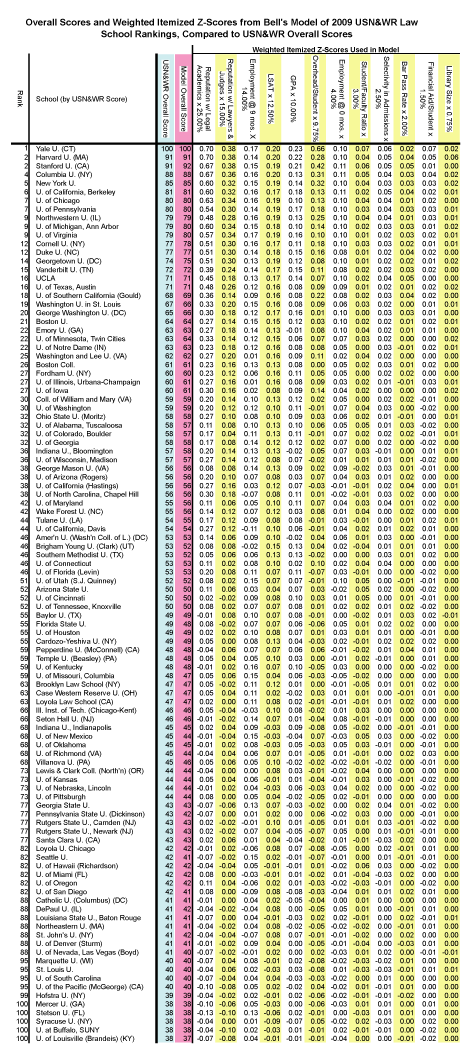As I did in 2005, 2006, and 2007, I here offer the z-scores used in my model of the USN&WR law school rankings. (Please see those earlier posts for fuller explanations of z-scores and why they matter.) This year, though, I'm offering the z-scores in weighted form. In other words, I multiplied the z-scores in each category of data by the percentage that they influence a school's overall score. That method of presenting the z-scores has the virtue of highlighting just which scores matter the most. My observations follow; first, the weighted z-scores used in my model of the 2009 law school rankings:

Unsurprisingly, you'll find the largest numbers in the upper, left-hand corner of the chart. There lie the most heavily-weighted z-scores of the law schools that scored the highest in USN&WR's rankings. Consider, for instance, the .70 weighted z-scores enjoyed by Yale and Harvard under the "reputation among legal academics" category; those numbers nearly swamp the effect of other measures of those schools' performances, and have twice the impact of the peer reputation scores of schools ranked as close as 20th from the top.
This presentation of the data shows how very little influence many of the things that USN&WR measures have on its rankings. The weighted z-scores for Bar pass rates, for instance, vary between only .05 and -.03, with a whole lot of zeros filling that span. Bar passage rates evidently do not matter much to any school's USN&WR score.
One more observation: Compare the weighted z-scores of Yale and Harvard, the two top-ranked schools. They run nearly neck-in-neck in all but one category: overhead expenditures/student. In that category, Yale enjoys a crushing advantage. Thanks largely to Yale's .66, the scores shown under "overhead expenditures/student" span .74 points—a greater range than in every category but "reputation among legal academics." Given that the former counts for only 9.75% of a school's score, while the latter counts for 25%, Yale's great wealth plainly buys it a great score in USN&WR's law school rankings.
[Crossposted at Agoraphilia, MoneyLaw, and College Life O.C.]
No comments:
Post a Comment